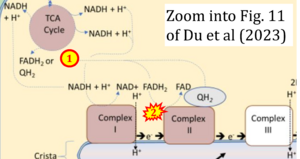Du 2023 bioRxiv
| Du J, Sudlow LC, Shahverdi K, Zhou H, Michie M, Schindler TH, Mitchell JD, Mollah S, Berezin MY (2023) Oxaliplatin-induced cardiotoxicity in mice is connected to the changes in energy metabolism in the heart tissue. bioRxiv 2023.05.24.542198. https://doi.org/10.1101/2023.05.24.542198 |
Du J, Sudlow LC, Shahverdi K, Zhou H, Michie M, Schindler TH, Mitchell JD, Mollah S, Berezin MY (2023) bioRxiv
Abstract: Oxaliplatin is a platinum-based alkylating chemotherapeutic agent used for cancer treatment. At high cumulative dosage, the negative effect of oxaliplatin on the heart becomes evident and is linked to a growing number of clinical reports. The aim of this study was to determine how chronic oxaliplatin treatment causes the changes in energy-related metabolic activity in the heart that leads to cardiotoxicity and heart damage in mice. C57BL/6 male mice were treated with a human equivalent dosage of intraperitoneal oxaliplatin (0 and 10 mg/kg) once a week for eight weeks. During the treatment, mice were followed for physiological parameters, ECG, histology and RNA sequencing of the heart. We identified that oxaliplatin induces strong changes in the heart and affects the heart's energy-related metabolic profile. Histological post-mortem evaluation identified focal myocardial necrosis infiltrated with a small number of associated neutrophils. Accumulated doses of oxaliplatin led to significant changes in gene expression related to energy related metabolic pathways including fatty acid (FA) oxidation, amino acid metabolism, glycolysis, electron transport chain, and NAD synthesis pathway. At high accumulative doses of oxaliplatin, the heart shifts its metabolism from FAs to glycolysis and increases lactate production. It also leads to strong overexpression of genes in NAD synthesis pathways such as Nmrk2 . Changes in gene expression associated with energy metabolic pathways can be used to develop diagnostic methods to detect oxaliplatin-induced cardiotoxicity early on as well as therapy to compensate for the energy deficit in the heart to prevent heart damage.
• Bioblast editor: Gnaiger E
Correction: FADH2 and Complex II
- FADH2 is shown as the substrate feeding electrons into Complex II (CII). This is wrong and requires correction - for details see Gnaiger (2024).
- Gnaiger E (2024) Complex II ambiguities ― FADH2 in the electron transfer system. J Biol Chem 300:105470. https://doi.org/10.1016/j.jbc.2023.105470 - »Bioblast link«


